MEGA65: The First Ten Years
MEGA65: The First Ten Years. Dan’s MEGA65 Digest for April 2025.
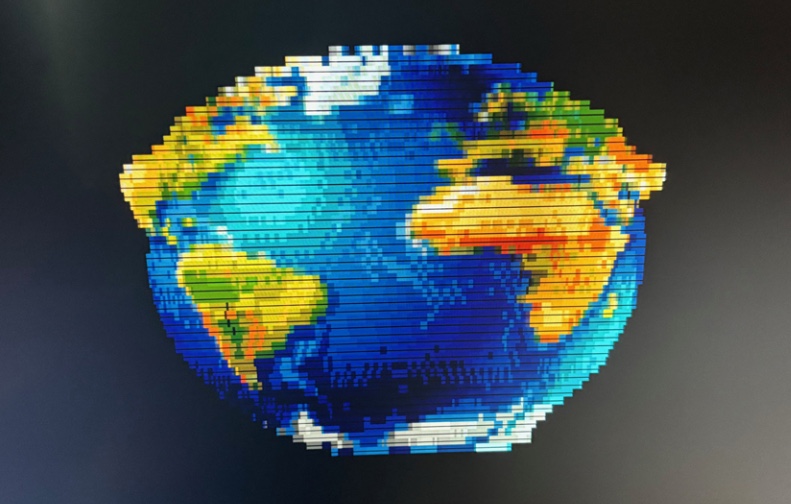
Ten years ago, Paul Gardner-Stephen and the Museum of Electronic Games and Art announced a joint effort to recreate the Commodore 65. The MEGA65 would be an open-hardware open-source product, based on the original Commodore designs and prototypes, manufactured in Germany and sold worldwide. Instead of fading into obscurity as a historical footnote, the Commodore 65 would achieve new potential as a modern day platform for recreational computing, a revival both familiar and new to thousands of people looking for a way to reconnect with the creativity, stimulation, comfort, and digital sovereignty of the 8-bit era.
In this special edition of the Digest, we’ll review the first ten years of the MEGA65 project through published media, articles, videos, and conference talks. Take your time to click through the links below and experience the project through the eyes of the people that built it and the community around it.
We also have some exciting announcements to celebrate the anniversary! Don’t miss this one!
The Great MEGA65 Egg Hunt begins
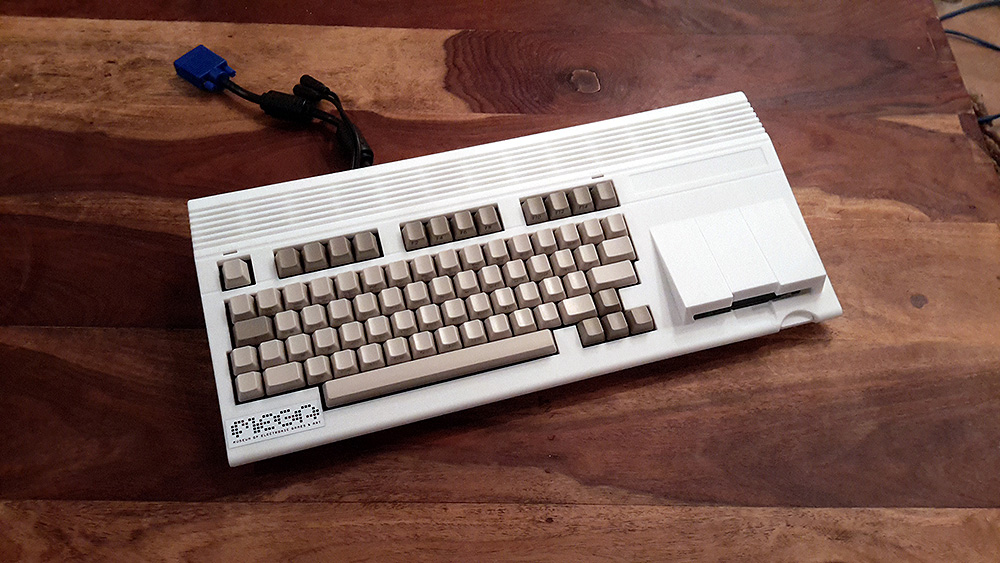
Breaking news from Detlef “deft” Hastik:
Having used citations and celebrated events from the history of computer nerds, and being fans of the book (not the movie!) Ready Player One, we have hidden an Easter egg in every MEGA65! The first person to find it will win an insane piece of MEGA65 history: the very first working and beautifully shaped MEGA65 prototype, shown in 2015 at AMIGA 30 in Neuss/Germany, six months after the project was officially announced by Paul Gardner-Stephen (AU) and Detlef Hastik (DE). This unicorn computer has an insurance value of over 15K USD, is signed by Dave Haynie, RJ Mical, Chris Hülsbeck, Dino Dini and other famous people, sports an unprinted (!) original C65 keyboard inside an SLS fabricated C65 case (yes, it’s made with lasers!) and - it also works!
Prepare for an unforgiving hunt through the depths of the MEGA65, through time, and of course, through space! There can be only one person to enter the nerd throne and win this nerd’s dream machine. Will it take days, weeks, months - or even years to solve the mind bending puzzles left by the creators and not discovered for years? Will you be the one to earn the crown?
Friends (and friends of friends) of the MEGA65 core team are not allowed to participate. Be prepared to be questioned. A time stamp will decide who the lucky winner is in case several people find the egg. It is allowed to build clans and search in groups :)
That’s right, this one-of-a-kind piece of MEGA65 history can be yours—if you know where to look! This multi-step trail has been under our noses for years and has not yet been discovered independently. Best of luck to everyone!
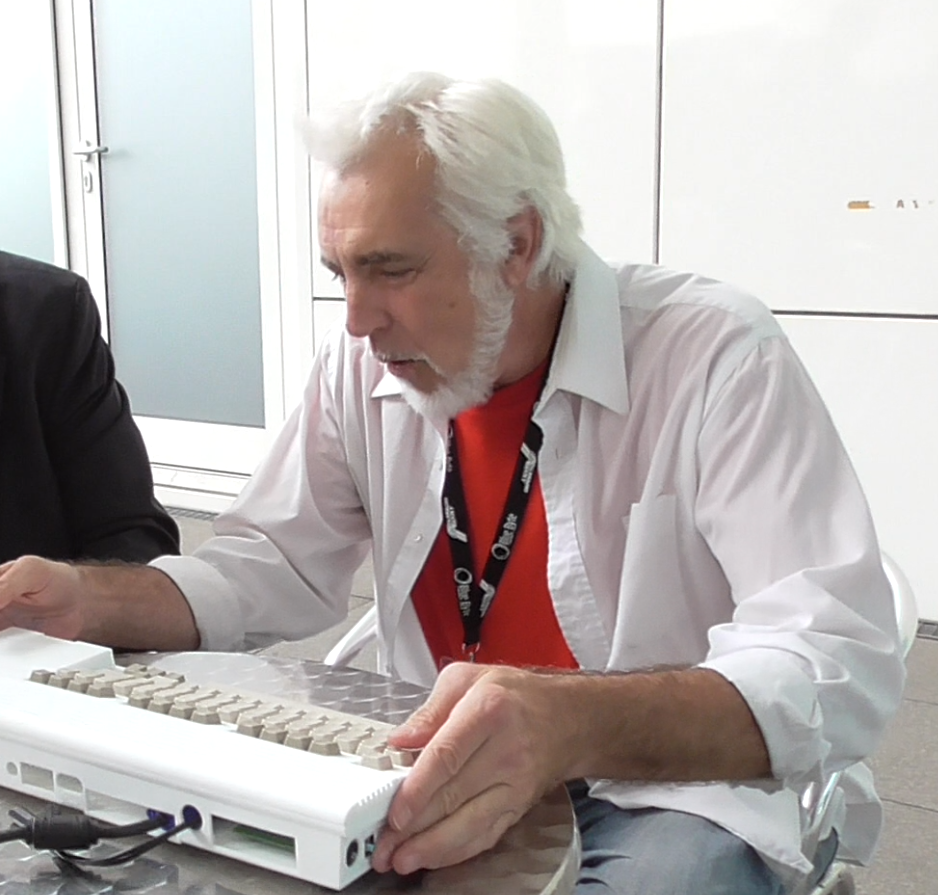
Intro Disk #4
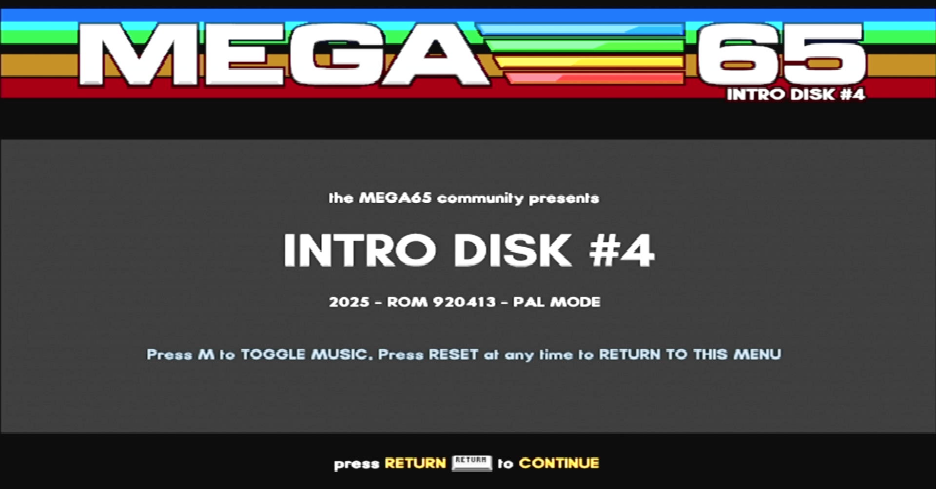
Every MEGA65 comes bundled with a large collection of software produced by the community, browsable by a menu that opens automatically when you first turn on the computer. The Intro Disk collection has added more titles each year since the MEGA65’s debut in 2022, and it’s time to expand it again!
Intro Disk #4 is now available for download. MEGA65 owners, sign in to Filehost and use this link for a version with extra licensed content. The new archive has an all-new menu system by MirageBD with music by Hein, and adds 72 new titles and dozens of articles about projects you can download and install. This brings the total size of the Intro Disk collection to 264 games, demos, and tools.
The entire collection has been revised and tested with the upcoming v0.97 release core, ROM, and system software. ID4 should work with release v0.96, but if you notice issues, I recommend installing the test version of the upcoming release (as discussed in last month’s Digest).
Huge thanks to Gurce, who has spearheaded the Intro Disk project from the very beginning. Thanks to his efforts curating, building, and testing the collection, everyone can experience what the MEGA65 has to offer, right out of the box.
Screenful of BASIC Compo, last call!
If you’ve been waiting until the last minute to enter the Screenful of BASIC Compo, congratulations! It is now the last minute! The itch.io game jam page will accept entries until 11:59 pm GMT, April 22, 2025.
After the deadline, all entries will be revealed for download, and a friendly round of voting will begin. Try out all the entries for yourself, cheer on your fellow competitors in the comments, and boost your favorites.
If you have any last minute questions or technical issues with your entry, be sure to ask in the Discord or the Forum64.de thread. Go go go!
More from deft!
Another note from deft:
But what’s this? Something stirs behind the curtain - quiet talks, shifting shapes, and a name long thought dormant may soon rise to breathe new life into an extraordinary machine. Could something we all hold dear be wearing new clothes in the future? Those threads are being woven in fractures between past and present, by hands both trusted and unexpected. Something is cooking. What’s on the menu? Nothing is confirmed. Everything is possible. Watch this space.
Commodore: The Final Years
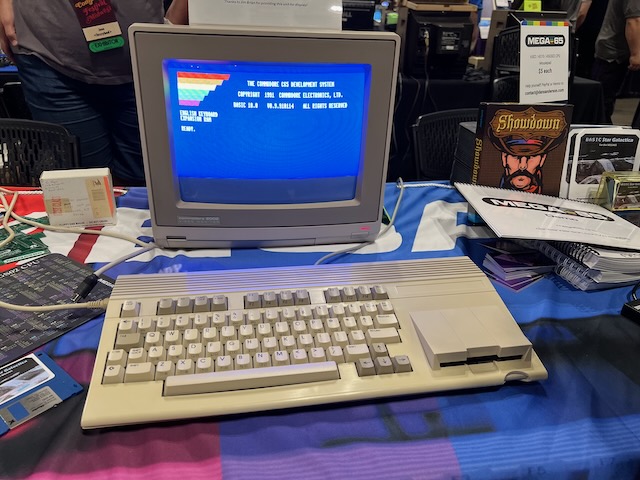
At the Consumer Electronics Show of 1985 in Las Vegas, Nevada, Commodore Business Machines announced two new computers: the Commodore 128 and the Commodore LCD. The C128 went on to sell 2.5 million units over the next four years. The CLCD was cancelled before it was released.
That same year, Commodore began developing the 4502 CPU, later rebranded as the CSG 65CE02. Originally intended as a more efficient CMOS version of the 6502, the final design of the 4502 was faster and more featureful, compatible with the documented 6502 instruction set, with new instructions and enhancements for making use of more memory. The new chip would be a drop-in replacement for the 6502, at least in some applications.
Chip designer Bill Gardei conceived of a new home computer using the new CPU, an 8-bit successor to the C64 and C128 that would eventually be known as the Commodore 65. The C65 would feature the 4502 (packaged with other components as the “4510”), along with an enhanced VIC-III (4567) graphics chip to follow the VIC-II from the C64 and C128. Like the C128, the C65 would run existing C64 software and support most C64 peripherals. And the faster CPU, improved graphics, and target price would beat the new home game console everyone was talking about: the Nintendo Entertainment System.
By 1989, Commodore needed the C65 to fill out the low end of its home computer line, something that would capitalize on the popularity of the seven-year-old C64, and be less expensive than the Amiga 500 (1987). Three people were tasked with delivering the new system in time for the 1989 holiday season. Gardei continued to work on the chipset. Fred Bowen developed the KERNAL ROM and BASIC 10 language, emboldened by a luxurious 256 KB of ROM space and a budget to hire contractors. Paul Lassa designed the motherboard and hardware layout. Despite the team’s best efforts, hopes for a 1989 release of the C65 were dashed by issues with the test chips coming back from the Commodore Semiconductor Group. Only a few prototype systems had been assembled by August 1989, and many bugs remained.
The delays gave Lassa an opportunity to work on a new feature: a DMA chip capable of copying large regions of memory at high speed. Lassa even managed to sneak in Amiga-like features for drawing large graphical objects using the chip. Gardei and others worked on improving the 4502’s compatibility with C64 software, made difficult by efficiency improvements that caused legacy programs to run with incorrect timing. By the time chip designs stabilized, 1990 had come and gone.
While there was still some residual momentum within Commodore to launch the C65 in 1991, North American sales teams were no longer interested, and work had already begun on a low-cost Amiga that would be released as the Amiga 600 the following year. Commodore leadership de-staffed the already under-staffed teams, and the C65 project was cancelled. In the throes of financial difficulty, Commodore began selling off the contents of its warehouses in 1993, including an unknown number of C65 prototypes, estimated to be fewer than 200. By mid-1994, Commodore was out of business.
- Commodore: The Final Years by Brian Bagnall.
- Commodore C65/C64DX information file #2, including Fred Bowen’s post to comp.sys.cbm dated September 17, 1993, “What’s a C-65???”
- Commodore 128 TV commercial (1985)
- Consumer Electronics Show 1985 video compilation: part 1, Sony; part 2 featuring the Atari 130XE (6502 CPU, 128 KB)
- Text of CES 1985 report from Compute!’s Gazette, April 1985
- Prototype of a C65 “classroom computer,” a version of the C65 without the built-in floppy drive, owned by Fred Bowen
Paul’s Commodore 65
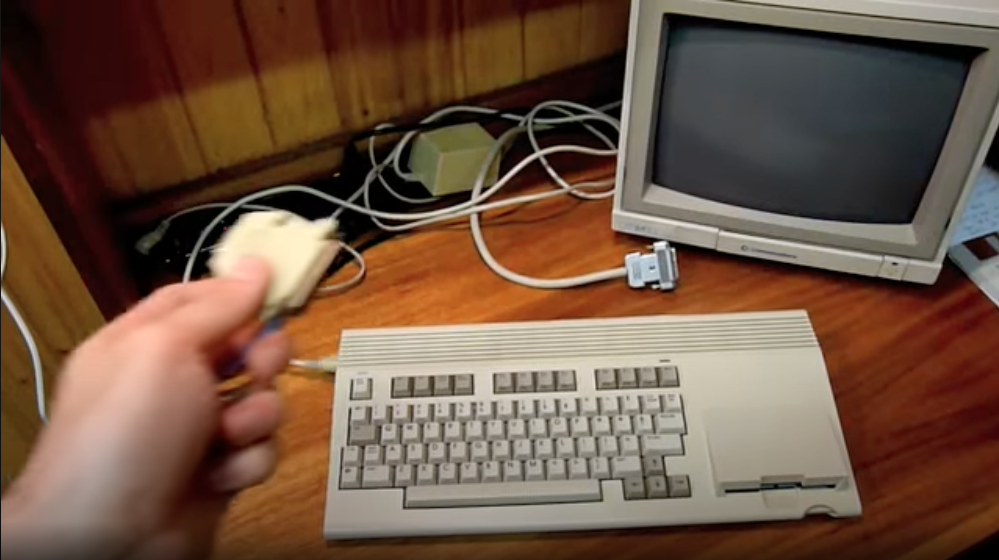
The Commodore 65 prototypes drifted among dealers and enthusiasts, mostly as curiosities, considering there was no software written for the unreleased platform. On the outside, the prototypes looked nearly finished, with the familiar wedge-style case, keyboard, and built-in floppy drive. Inside, the prototypes varied, with inconsistent versions of the mainboard and chips. The KERNAL ROM was incomplete, no meaningful software existed other than a few simple in-house demos, and no documentation was publicly available at the time.
One C65 prototype made it into the hands of engineer Paul Gardner-Stephen. Despite the lack of commercial software, Paul made regular use of the machine, learning what he could through experimentation and writing his own programs. Over the next sixteen years, the historical value of the prototype machine eventually exceeded Paul’s ability to care for it, and he sold it to a collector in the year 2010.
For the lucky few that owned them, the C65 was a glimpse into an alternate history with one more generation of 8-bit home computers. Paul conceived of a new 8-bit based on his experience with the C65. By 2010, FPGA technology had become fast enough and inexpensive enough for a single person to develop such a computer, without the large scale chip fabrication facilities used by Commodore developers to iterate on the original designs.
His C65 now in other hands, Paul started work on the “C65GS,” a new computer with the same spirit as the C65 and some degree of backwards compatibility. Paul originally expected the project to take the form of an “accelerator” board that would connect to vintage Commodore 64 hardware. The C65GS would be built using an off-the-shelf FPGA development kit, so early stages of the project could proceed without fabricating any parts.
- March 12, 2010: Paul tours his Commodore 65. Paul had to sell his C65 shortly after this video was made.
- January 24, 2014: Paul starts a developer blog for the “C65GS” project, an 8-bit computer inspired by the C65.
- January 31, 2014: Paul explains motivations and goals for the project.
- March 25, 2015: Paul types “Hello World” on the C65GS core running the C65 ROM, on the Nexys 4 development board for the Artix 7 FPGA.
Paul joins MEGA
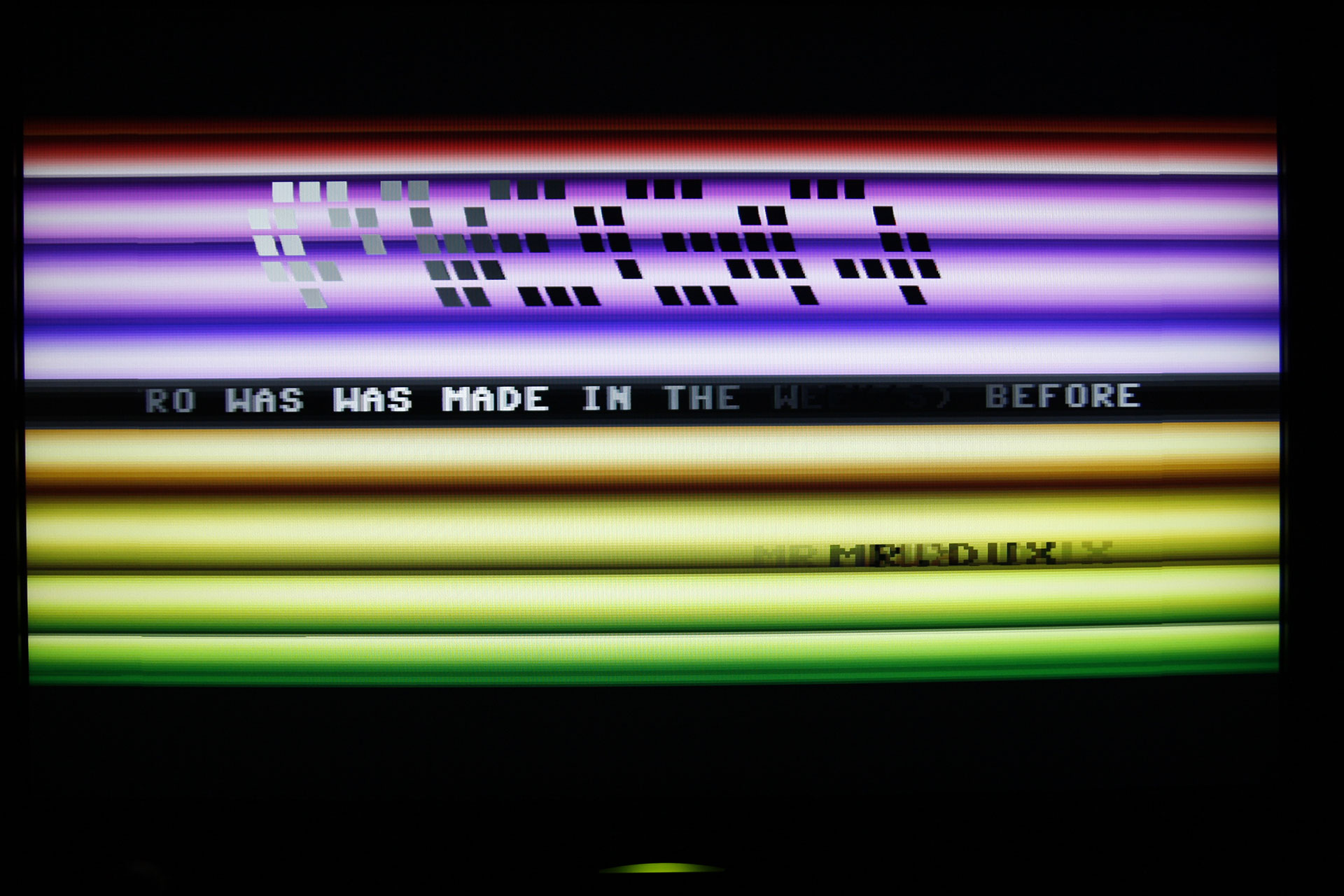
The Museum of Electronic Games & Art (MEGA), a German non-profit organization dedicated to computer engineering education, creativity, and preservation, already had some experience recreating vintage computer history by the time they heard of Paul’s project. In 2011, MEGA members recreated Tennis for Two (1958), the early video game milestone played on an oscilloscope. In 2013, MEGA debuted their recreation of the ENTEX Adventure Vision (1982) with its unique spinning mirror display. These projects produced research documentation, emulators, tools, and prototypes that would join MEGA’s traveling exhibits that also included preserved hardware and modern demo software.
MEGA was exploring a potential project based on the Commodore 65 when they discovered Paul’s C65GS developer blog. MEGA and Paul joined forces in 2014, and relaunched the project in April 2015 as the MEGA65. The new computer would put Paul’s FPGA-based design into historically accurate reproductions of the Commodore 65 case with keyboard and built-in 3-1/2" floppy drive, as well as modern conveniences such as digital video output and Ethernet connectivity.
- April 22, 2015: Paul partners with the Museum of Electronic Games & Art (MEGA). MEGA announces the MEGA65 project, and Paul discusses it on the dev blog.
- September 13, 2015: MEGA65 playing some demos and games.
- October 13, 2015: AMIGA 30 in Neuss, Germany: Interview with Detlef Hastik [German language], with the MEGA65 FPGA board mounted in a C64C case.
- October 15, 2015: AMIGA 30: deft presents the MEGA65 [German language].
- November 27, 2015: Paul presents an early MEGA65 in a C64C case: “Using Understandable Computers to Make Computers Understandable,” at Flinders University.
Keyboard cases and community
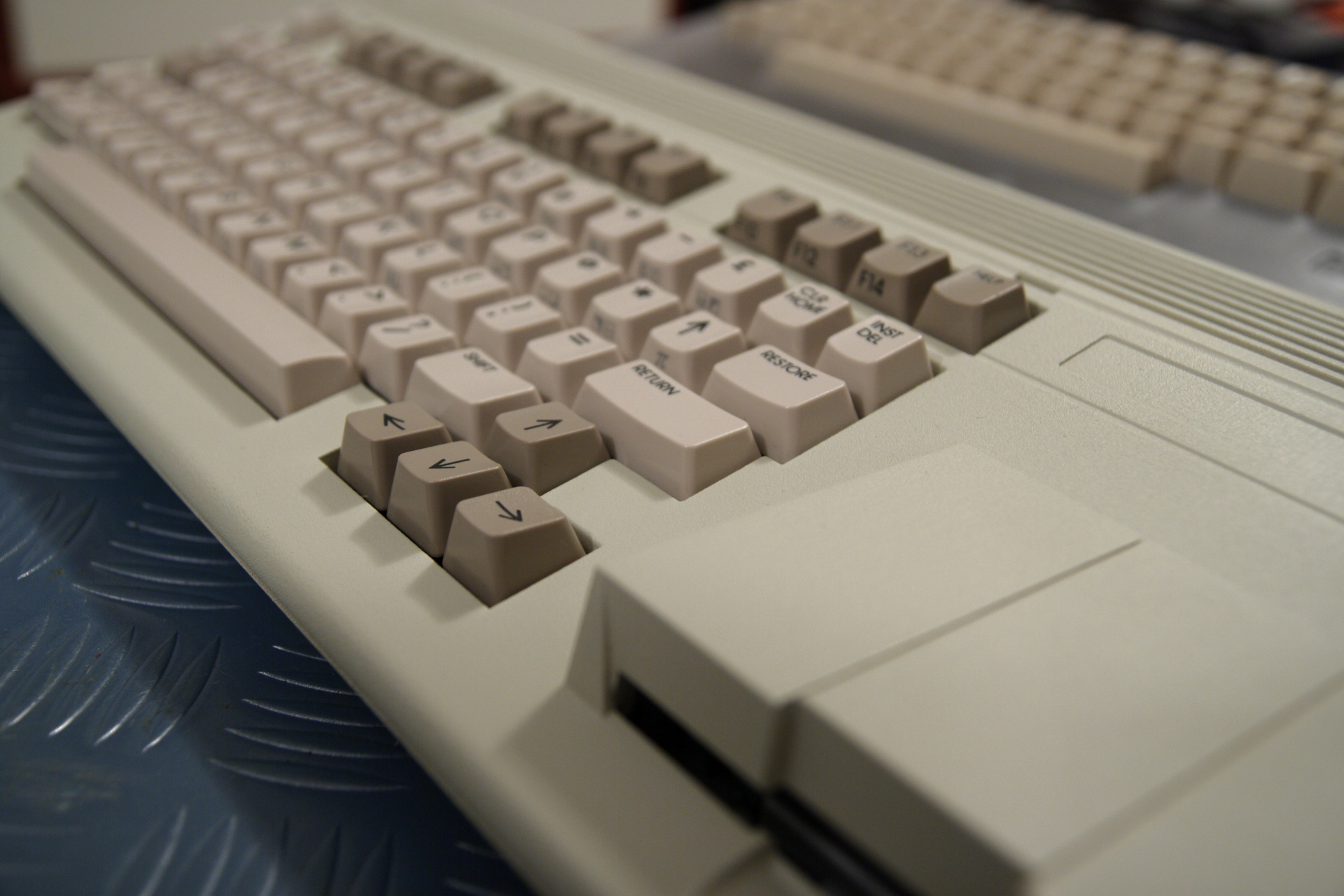
MEGA made steady progress on the keyboard case, exhibiting generations of prototypes in 2015 and 2016. The earliest prototypes were already measurement-exact reproductions of the C65 case and keyboard. Meanwhile, FPGA development was well under way. Paul and Detlef established the project with open source and open hardware licenses, and began the process of building a community of volunteer developers and testers. Paul published regular updates to his developer blog. As part of his work as a researcher and lecturer at Flinders University in Australia, Paul used the MEGA65 as a learning platform for his students. MEGA began promoting the project to solicit developer interest, and to stoke the imagination of the vintage computing community.
- January 22, 2016: MEGA shares photos of the second prototype.
- February 17, 2016: The podcast Scene World interviews Paul Gardner-Stephen, Andre Kudra, and Detlef Hastik.
- April 2016: Retrobörse interview with deft.
- August 2016: LGB begins work on a MEGA65 target for his Xemu emulator suite, based on previous work on a C65 emulator. Xemu would track MEGA65 development to the present day.
- August 14, 2016: Gurce presents an early version of the m65dbg debugging tool.
- January 26, 2018: VIC-IV multi-color multiplexed hardware sprite demo.
MEGAPhone: the big picture

It’s easy to assume that the warm feelings we have for personal computers from our childhoods are purely nostalgia. Perhaps we only feel this way about these piles of junk because we grew up with them. But most people I know in this hobby cite another reason for the attraction: simplicity. Modern computing is built upon huge stacks of software. The lowest layers wrangle the unfathomable complexity of electrons coursing through switching circuits, and upper layers make the computer easier to program and easier to use. Over time, the depth and complexity of these layers have grown to alienate a computer’s owner from its power, ceding control of our data-driven personhood to software and service companies. Even when this exchange has obvious benefits—you didn’t have to code that web browsing program to use it—we get the creeping sense that our modern computers aren’t entirely ours. The technological centerpieces of our lives are merely rented, not owned, and don’t always act in our best interests.
In contrast, vintage computers are knowable, stable, comfortable. They do what you tell them to, and don’t do anything else. There are no background processes, there’s no unsolicited network activity, there are no operating system updates being installed remotely by the manufacturer, and there’s no user telemetry data being sent out to who knows where by something you didn’t know you installed years ago. It doesn’t take rose-tinted glasses to see this has some benefit over modern commercially-available computing products, something valuable that we may have lost.
Could modern-day personal computing learn from its ancestry? Could we restore the powers and freedoms we once had without sacrificing utility, or are the tradeoffs we’ve made for modern conveniences inevitable? Could the implicit principles of early personal computing be applied intentionally to the design of a modern computer? To a smartphone?
The MEGAPhone attempts to answer to that question. Funded by grants from the NLnet Foundation, MEGAPhone is the modern smartphone reimagined through the lens of the MEGA65 and Commodore 8-bit computers. It’s literally the same platform, running the MEGA65 FPGA core and ROM on portable hardware, extended with discrete mobile communication components. The “apps” are just programs, and you can write your own phone apps in BASIC 65 or machine code. The MEGAPhone architecture takes personal security and privacy to its strongest useful conclusion, mobile computing not beholden to a single manufacturer or provider, accessible and extensible by its user.
- October 26, 2018: Paul gives a status update, “Taking the big picture view.” Paul introduces the MEGAPhone, a secondary project to create a portable MEGA65 with a cellular modem and voice capabilities, as a research platform for students.
- November 13, 2018: Paul demos variable-width fonts in homemade presentation software.
- January 23, 2019: Paul presents the MEGAPhone at Linux Conf AU 2019.
- March 2, 2019: Paul gives a status update from Australia [German and English].
- June 5, 2019: Paul shares photos of an early MEGAphone prototype.
Pre-series, case molds, and DevKits
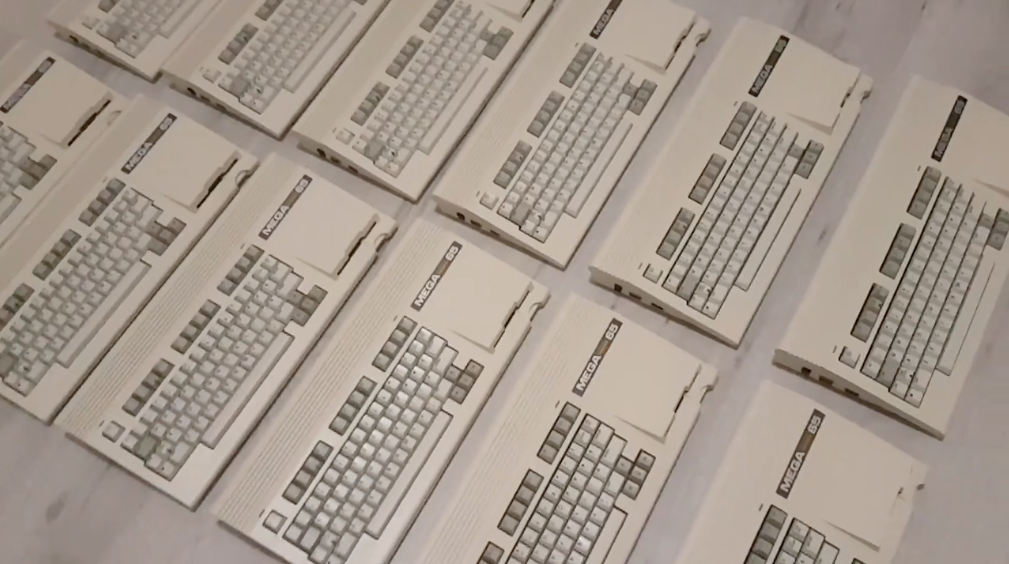
The MEGA65 hit another milestone towards wide distribution with the “pre-series” prototypes in 2019, a short run of complete units with early revision (R2) mainboards. These were sold privately to team members to raise money for the next phase of the project.
- July 1, 2019: MEGA65 introduction of pre-series hardware. A total of 20 were made.
- September 18, 2019: Twelve pre-series MEGA65s with bonus random animal noises.
- November 1, 2019: GeoWrite 128 and GeoPaint 128 running on the MEGA65.
- November 3, 2019: Brotkastenfreunde podcast interviews Paul [German language].
- December 28, 2019: Paul presents the MEGAPhone at 36C3, the Chaos Communication Congress for 2019: “Creating Resilient and Sustainable Mobile Phones.”

The final version of the MEGA65 would use an injection molding process to produce the replica plastic case and keycaps. Unlike short-run processes like the vacuum shaping used for the pre-series cases, injection molding requires a significant up-front tooling cost, carving the shape of the plastic into reusable metal molds capable of surviving the injection process. MEGA turned to the growing community of enthusiasts for support, raising over 69,000 EUR in donations.
While the final cases were being developed, MEGA wanted to get the nearly-completed mainboards into the hands of eager developers. They produced a limited run of feature-complete MEGA65 DevKit models, with cases made from clear laser-cut acrylic panels. These would be the first MEGA65s sold to the public. The 100 units sold out quickly.
- January 2020: MEGA opens a fundraising campaign for the case molds, raising over 69,000 EUR.
- June 5, 2020: Injection molding tooling testing.
- June 17, 2020: MEGA reveals the MEGA65 limited edition Dev Kit, 100 units.
- June 20, 2020: Vintage is the New Old interviews Paul.
- September 10, 2020: Detlef (deft) and Anton (adtbm) give a progress update.
- November 2020: MEGA65 DevKit assembly videos by retroCombs, Shallan, and Nostalgia Nerd.
- November/December 2020: Shallan’s MEGA65 development videos: First Steps, The Raster Rewrite Buffer. See also Shallan’s developer streams from January 2021 to June 2022.
Picking up steam
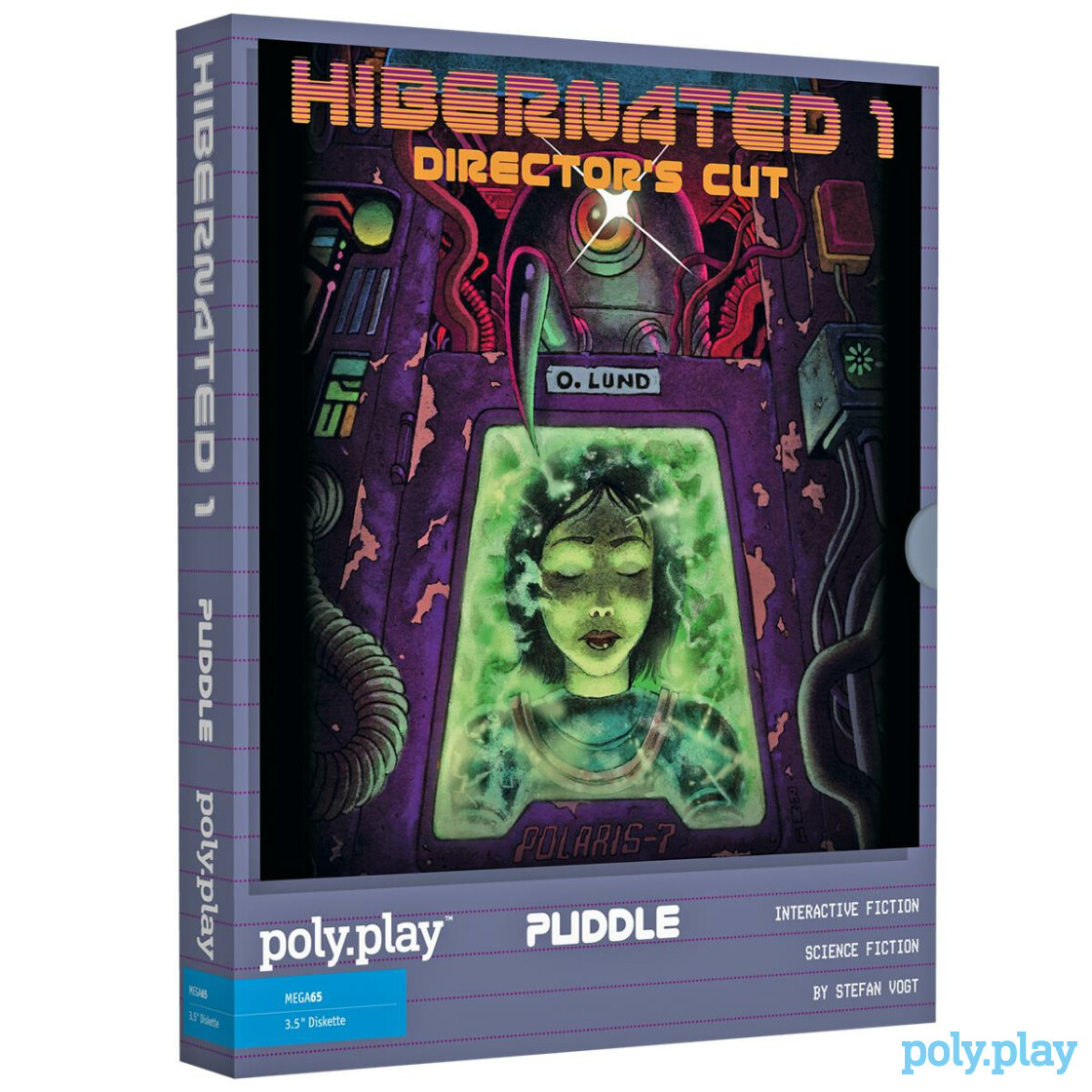
The MEGA65 project had permission from Commodore intellectual property licensor Cloanto to distribute the original Commodore 65 prototype KERNAL ROM with the computer. The code dumped from the C65 prototype ROM chips was incomplete, and it seemed clear that it wouldn’t provide the best experience for MEGA65 owners in its original form.
The team formed two projects to address this. One group dug out the original Commodore 65 KERNAL source code from archives, wrote a custom assembler compatible with its vintage syntax, and began fixing bugs, completing features, and adding useful extensions. Another group began work on an all-new ROM, a clean-room implementation of the KERNAL intended to be API compatible with software written in BASIC 10 or using C65 KERNAL APIs, using no original Commodore IP so that it could be fully open-source licensed. The “closed ROM,” “open ROM,” and the original C65 prototype ROM would be included with the MEGA65, with an easy way for users to switch between them. The closed ROM was the most complete option by the time of launch, and it was chosen as the default experience.
Meanwhile, the community began writing and polishing a professional-quality user’s guide, to be printed and included in the box. The guide included a complete reference for the closed ROM’s built-in BASIC with the latest extensions, now called “BASIC 65” to differentiate it from the original C65’s BASIC 10. The typesetting was designed to resemble an idealized form of the original Commodore 64 manuals, and contributors spent many months editing and testing the material.
By September 2021, the MEGA65 was finally ready for its first production run. Manufacturing and distribution partner Trenz Electronic opened for pre-orders, and sold out the first batch within a few days.
- January 23, 2021: Paul and Martin present the MEGA65 at LinuxConf AU 2021 (abstract). See also Paul’s other talk at the same conference, Digital Sovereignty, a concept at the heart of the MEGA65 project.
- January 28, 2021: Detlef and Anton update, January 2021.
- February 3, 2021: MEGA65 team member Bit Shifter picks up development of the MEGA65 ROM based on the original C65 ROM source code.
- March 18, 2021: Detlef and Anton update, March 2021.
- April 30, 2021: The Retro Hour podcast interviews Paul.
- May 16, 2021: Detlef and Anton update, May 2021.
- September 30, 2021: Pre-orders open for MEGA65 production units. Reporting of pre-announcement, belated official blog announcement.
- October 10, 2021: Retro Computer News on the MEGA65 and MEGAPhone.
- December 26, 2021: retroCombs demonstrates the MEGA65 Intro Disk.
- January 7, 2022: poly.play publishes the first boxed commercial title for the MEGA65: Hibernated 1: Director’s Cut.
- March 21, 2022: lydon explains the MiSTer2MEGA65 framework.
Production models

Thousands of people joined the queue for the new computer, excited that the project was close to achieving its lofty goals—and perhaps eager for something to do at home during the continuing global health crisis. Unfortunately, that same crisis disrupted supply chains for electronic components and other materials, and Trenz had to delay delivery of the first batch by several months. Subsequent delivery dates would be difficult to predict, dependent entirely on availability of components.
Work continued on the FPGA core and KERNAL ROM projects. The MEGA65 was designed to be upgradeable, such that everyone who would receive hardware would continue to benefit from improvements. The first batch of computers shipped with what would be known as v0.9 of the platform.
Also included with every computer: an SD card populated with dozens of programs written by early developers, DevKit owners, and team members. When a new owner first turns on the MEGA65, they are greeted by the Intro Disk menu, a colorful animated display with jaunty music. The SD card also bundled many Commodore 64 games and demos, which the user could run from the Commodore 65’s C64 compatibility mode.
I received my MEGA65 in May of 2022. To help new owners get over some of the rough patches in the early experience while the team worked to fix them, I wrote a Welcome Guide with advice and explanations. The project needed help staying in contact with people waiting on pre-orders and others who had expressed interest, so I started Dan’s MEGA65 Digest, a monthly email newsletter and read-aloud podcast. My hope was to get more information about the MEGA65 into various forms of online media, improve the ability to find the project through search engines, and keep people informed of project activity as we bootstrapped the community.
- May 2022: The first batch of 400 units is delivered.
- May 27, 2022: Epsilon’s World review with many photos.
- May 28, 2022: Detlef (deft) and Oliver (lydon) update.
- April 28, 2022: Gurce introduces the BASIC PLAY command.
- May 11, 2022: Thomas Gruber receives his MEGA65.
- May 27, 2022: drwuro describes his first experiences with BASIC 65.
- June 4, 2022: AmigaLove: The Miraculous MEGA65 Computer.
- June 2022: I publish the MEGA65 Welcome Guide for new owners of the 1st batch of retail MEGA65s.
- August 31, 2022: I start Dan’s MEGA65 Digest, a monthly newsletter and read-aloud podcast.
- September 17, 2022: Gurce presents Battle Sparrow to Commodore Users Europe, and explains how he got involved with the MEGA65 project as early as 2016.
- September 24, 2022: RetroRecipes unboxes the MEGA65. See also his follow-up playtest.
- October 15, 2022: retroCombs introduces the MEGA65, the official intro video on the MEGA65 home page. See also the MEGA65 User’s Guide video series.
- November 18, 2022: Filehost launches.
- November 20, 2022: Xanadu, by deathy/BAS and Gurce, a two-part demo released at Syntax Party 2022.
The second batch
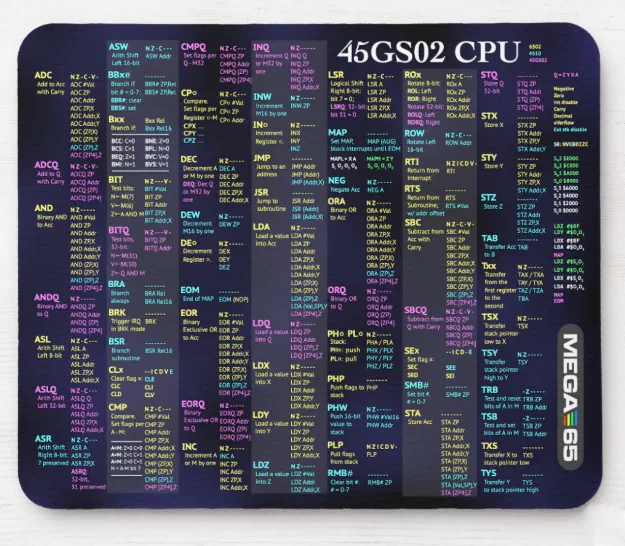
The first delivery batch in May 2022 consisted of 400 units. Another 400 units shipped eight months later, in 2023. The supply chain crisis was ongoing, with limited FPGA supply going to the world’s biggest customers and leaving smaller projects on hold. As word spread about the project, more people got in line, but many who pre-ordered in late 2021 were still waiting.
With more computers in the hands of developers, the MEGA65 was coming into its own, both as a capable 8-bit home computer with attractive features for games and demos, and as an FPGA platform for alternate computer chipsets. One of the most influential FPGA projects was the C64 core, a highly accurate recreation of the Commodore 64 based on a similar project for the MiSTer FPGA platform. The C64 core was especially welcomed by MEGA65 owners who were hoping to use it as a C64 while waiting for the community to produce more MEGA65 software. The original Commodore 65 team never fully overcame design choices that limited compatibility with existing C64 software, and some speculate that this was a contributing factor that led to the C65 getting cancelled. With the C64 core, the MEGA65 could reconfigure itself with a C64 chipset and run nearly all C64 software with high fidelity.
Then came the first MEGA65 accessories. Publisher poly.play released several MEGA65 games as deluxe boxed editions. Paul designed a four-player joystick adapter for the cartridge port, and Jim Happel assembled some to distribute along with a disk of four-player games. Boutique vintage computer clothier Sew Ready produced a dust cover for the C65/MEGA65. I designed a machine code quick reference for the CPU that you can purchase as a mousepad or a poster. Paul also started work on an expansion board, a DIY kit that would sit inside the MEGA65 case and provide additional hardware features. (The expansion board is still a work in progress.)
We declared a new release of the MEGA65 platform—specifically the MEGA65 core, ROM, and system software—as version 0.95 in late 2022, in time to be installed at the factory on second-batch machines. Of course, owners of first-batch machines could upgrade to v0.95 for free. To accompany the release, we finished a 2nd edition of the User Guide that was used for the next printing of bundled manuals, and also made it available via print-on-demand so owners of the 1st edition could upgrade this as well.
- November 2022: MEGA65 platform v0.95 is released.
- January 2023: The second batch of 400 units is delivered.
- January 20, 2023: XMAS65, by Mirage.
- January 27, 2023: 8-Bit Resurgence discovers the MEGA65.
- June 23, 2023: C64 for MEGA65 Version 5 Release Trailer.
- July 24, 2023: I present the MEGA65 at Pacific Commodore Expo NW 2023: “What’s up, MEGA65?”
- September 30, 2023: lydon presents at Classic Computing 2023 [German language].
- October 9, 2023: Bad Apple, by Mirage.
- October 14, 2023: lydon presents the MEGA65 at Vintage Computing Festival Berlin: “Peek the Past, Poke the Future.”
- November 29, 2023: 45GS02 Quick Reference mousepads available for purchase.
- January 8, 2024: The 8-Bit Guy takes a look at the MEGA65.
- January 31, 2024: Paul assembles a prototype expansion board [live stream].
General availability
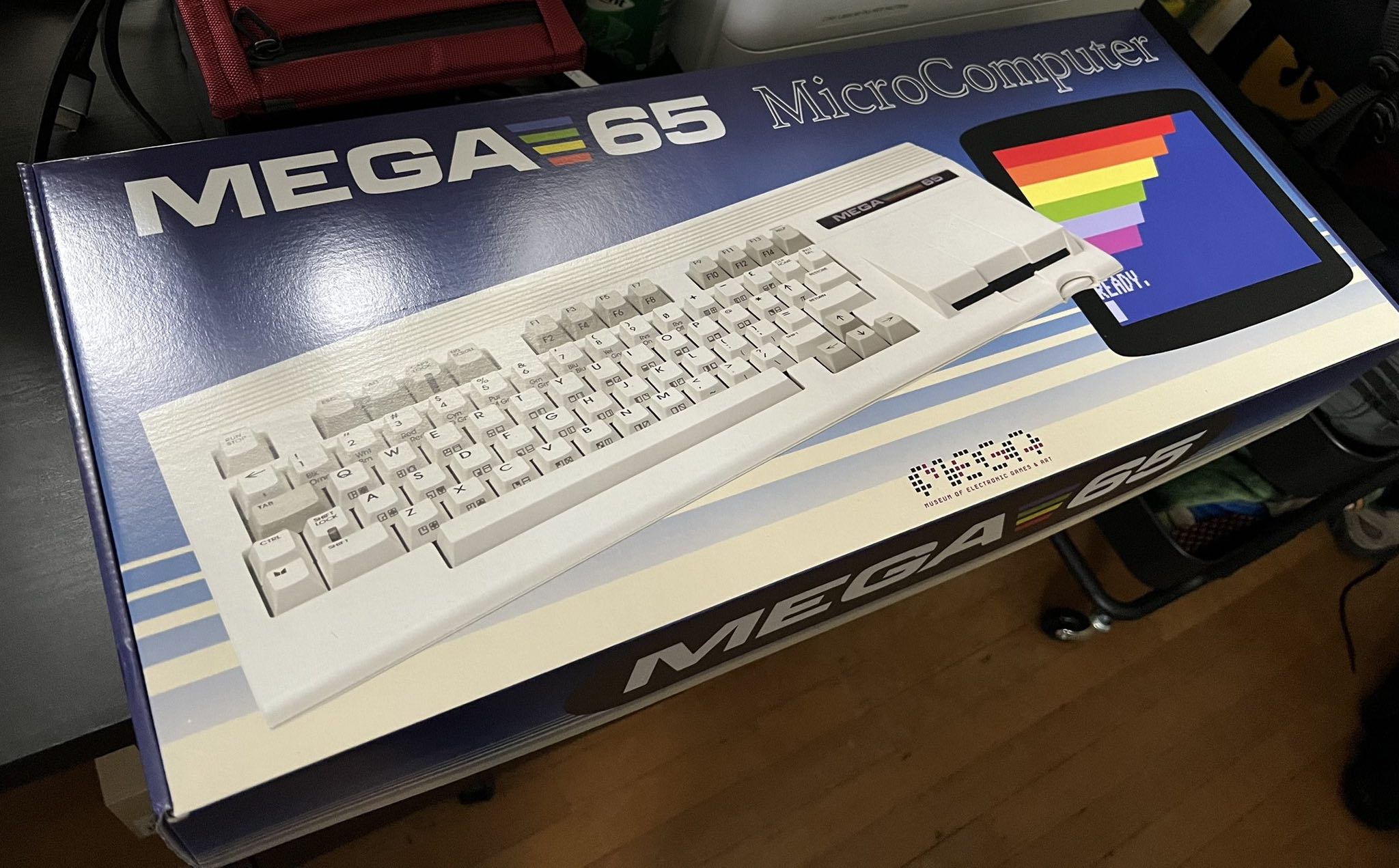
Keeping a hardware project perpetually available at low volumes requires some flexibility when it comes to components. The MEGA65 is not a mass-produced appliance, and neither MEGA nor Trenz can purchase and store thousands of identical parts just to keep using the same mainboard design. In 2023, Trenz notified the team that components of the R3A revision of the mainboard used in the first 800 MEGA65s shipped would soon become unavailable. Paul updated the board design with newer replacement parts. He also took the opportunity to fix a few issues we encountered with R3A boards, such as unreliable Real-Time Clock chips. The R6 mainboard revision would be used for MEGA65s going forward, at least until the next component end-of-life notice.
Some members of the community expressed concern that the hardware revision meant that some MEGA65s were different than others, and certain products might only work with one revision or another. This was mostly noticed with the FPGA core projects, which needed to be updated by their authors for the newer board. Eventually, nearly all alternate cores were updated for both mainboard revisions. (As of this writing, only a few arcade cores remain to be updated.) More controversially, the R6 mainboard included a few extra features in addition to repairs. At the request of the community, Trenz Electronic began selling bare mainboards for anyone wishing to upgrade.
By 2024, the supply chain crisis abated. All remaining pre-orders for MEGA65s were fulfilled, and Trenz Electronic upgraded the MEGA65 to in-stock status in their store. Today, Trenz assembles computers in small batches to keep new orders for the MEGA65 on a short delivery timeline.
- February 2024: MEGA65 platform v0.96 is released.
- June 2024: The third batch of 800 units is delivered.
- June 21, 2024: Lyonsden Blog review with photos.
- June 22, 2024: I present the MEGA65 at Pacific Commodore Expo NW 2024: “Lessons from My First Two Years with the MEGA65.” See also Katie S. unboxing the MEGA65 at the same event.
- October 2024: All pending pre-orders are fulfilled, and the MEGA65 becomes generally available for sale.
- October 7, 2024: John Aljets interviews me briefly at Portland Retro Gaming Expo.
- November 16, 2024: Joeri van Haren interviews me at CRX 2024 [at 4:22:41 of the Day 2 stream].
- January 20, 2025: The 8 Bit Theory: What C128 and C64 developers should know about the MEGA65’s personalities.
The Next 10 Years

The thing that excites me most about the MEGA65 is that I keep meeting new people who are also excited about it. Trenz Electronic continues to receive new orders, and sometimes people tell me when they place their orders after seeing the MEGA65 at a conference or in a YouTube video. I’ve met people who had never heard of it before, people who heard rumors about it in the early days, and people who were on the verge of buying one and decided to take the plunge. Kids love it, at least the ones attending vintage computing conventions. They play the games, but they have just as much fun flipping through the User Guide and trying out the BASIC commands.
A healthy recreational computing community has multiple layers, each one grown from and supported by the one below it. Initially, these layers form around the platform itself: hardware hackers, FPGA core developers, KERNAL coders, technical writers. Then new people try it out, and find purchase to explore their interests and share their results: programming learners, game makers, demosceners, tool builders, media creators. As people are inspired by the passions of others, they contribute their own passions back, giving everyone more ways to enjoy and engage. People come and go, but the surface area continues to expand. This, more than anything, is what prevents technological abstractions from alienating users: there are people at every layer willing to help other people learn and explore.
What I most like about the MEGA65 specifically is how its layered design welcomes a community with diverse backgrounds and interests. The authentic Commodore-style BASIC is more accessible than ever, for running programs and for learning how to write new ones. Programmers both novice and expert can explore the undiscovered country of the architecture, pushing this alternate 8-bit timeline forward. And Commodore enthusiasts can access a previously inaccessible piece of history, use it with vintage peripherals and software, and summon more platforms with FPGA cores.
The community at the FPGA layer has been surprisingly active in the last couple of years. The MiSTer2MEGA65 framework and the excellent work of the MiSTer community draw a clear path toward someday having a complete Commodore computer museum that fits on your desk, in an authentic Commodore keyboard-wedge form factor. C65/MEGA65 and C64 cores exist today, PET and VIC-20 cores have public test releases, and there’s a great deal of interest in a potential Amiga core as well. There are cores for the ZX Spectrum, Game Boy, and TI-99/4A, with an Apple IIe core also in development, not to mention a dozen arcade cabinet cores. The MEGA65 has huge potential as an FPGA learning tool, as well.
Specific to the MEGA65 platform (that’s the core, ROM, system software), the MEGA65 Steering Committee is marshaling the project on a steady path to a v1.0 release, with an emphasis on feature quality and API stability. Development will continue beyond v1.0, using a high bar for backwards compatibility of changes, while continuing to track the interests of the community as it evolves and grows. As the current ROM lead, I’m especially interested in formalizing more of the KERNAL API surface and building hooks for third-party extensions. (Inner layers beget outer layers.) And we have tons of ideas for improving the non-platform parts of the user experience: on-screen interfaces, documentation, PC tools, networking.
MEGAPhone research will contribute features back into the MEGA65 platform. It may even be hardware you can purchase someday. The MEGA65 hardware will continue to adapt to shifts in global conditions, as resources allow, so the community can continue to grow.
And what was that “new clothes” thing deft was on about? 🤔
To ensure the growth and longevity of the platform and the community, we must continue to pump energy through the layers, inviting more people with diverse interests and enthusiasm. It’s why I write this Digest.
If you find this Digest useful, please consider becoming a supporter. Visit: ko-fi.com/dddaaannn
Congratulations to the MEGA65 team on an incredible ten years!
— Dan